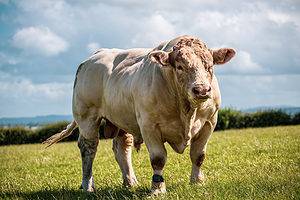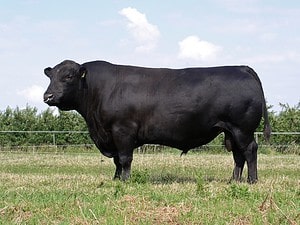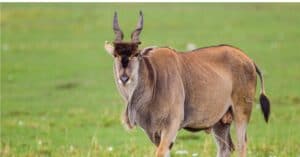The traditional image of your typical farm cattle has been transformed into an enduringly pint-sized package — introducing the utterly irresistible mini cow! In addition to their adorable appearance, these charming cows require less space and exhibit gentle and friendly traits, making them ideal pets, as well as farm animals. But just how big do these tiny cows really get? Let’s dive into the enchanting world of miniature cows and unravel the wonders of their incredible size!
What Is a Mini Cow?
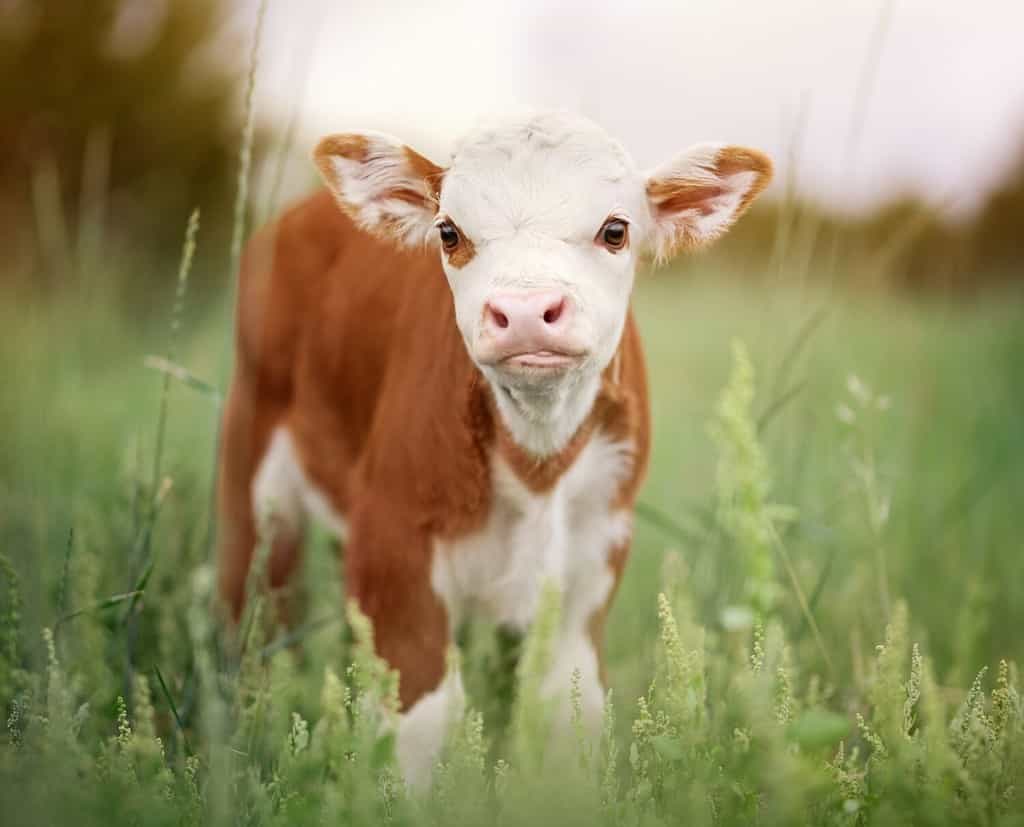
Mini cows are social and enjoy being around people.
©KatieDamonPhoto/Shutterstock.com
A mini cow is actually just a normal cow — the only difference is that it is much, much smaller! Also referred to as “teacup cows”, mini cows have the same body profile and silhouette as a standard, full-size cow, but are usually only half to a third the size. They have smaller heads and shorter legs, and come in many beautiful colors like brown, red, black, white, silver, or yellow.
According to the International Miniature Cattle Breeder’s Registry, there are 26 breeds of mini cows in the world, but only a few of them are publicly recognized. Some miniature cow breeds are the result of a type of dwarfism called bovine achondroplasia, which causes smaller skulls and short limbs. However, miniature breeds with dwarfism are often not accepted or recognized by official cattle associations.
On the other hand, other miniature cow breeds are the result of selective crossbreeding. The process takes many generations, as standard cows with slightly smaller bodies are bred together in hopes of producing even smaller cows. Each breed of mini cow has its own unique characteristics, but in general, miniature cattle have a few things in common. For example, mini cows are known to be quite docile and easy to handle, in addition to being very smart and loyal to their owners. Many breeds are also quite hardy and require less food and space than standard-sized cows.
How Big Do Mini Cows Really Get?
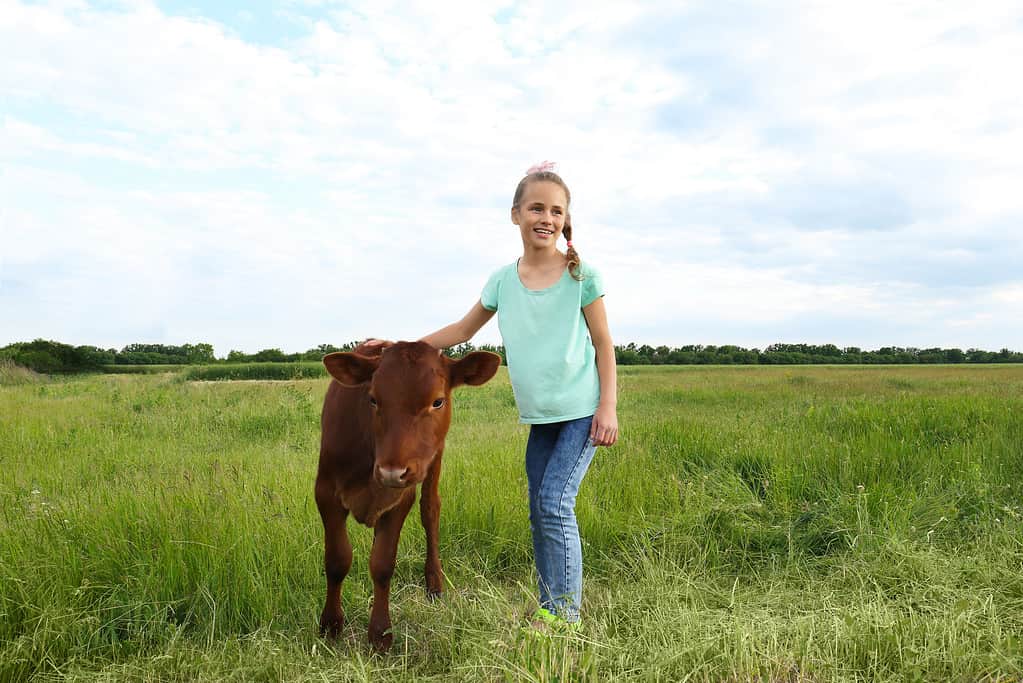
Mini cows are relatively easy to manage and care for.
©Liudmila Chernetska/iStock via Getty Images
On average, mini cows typically weigh between 500 and 1,000 pounds when fully grown. All mini cows are around one-half to one-third the size of a standard cow, but there are some variations within this range. The term “mini cow” applies to three different sizes of cows:
- Midsize mini cows, which measure 42 to 48 inches tall
- Standard mini cows, which measure 36 to 42 inches tall
- Micro-mini cows, which measure less than 36 inches tall
Purposes and Benefits of Owning Mini Cows
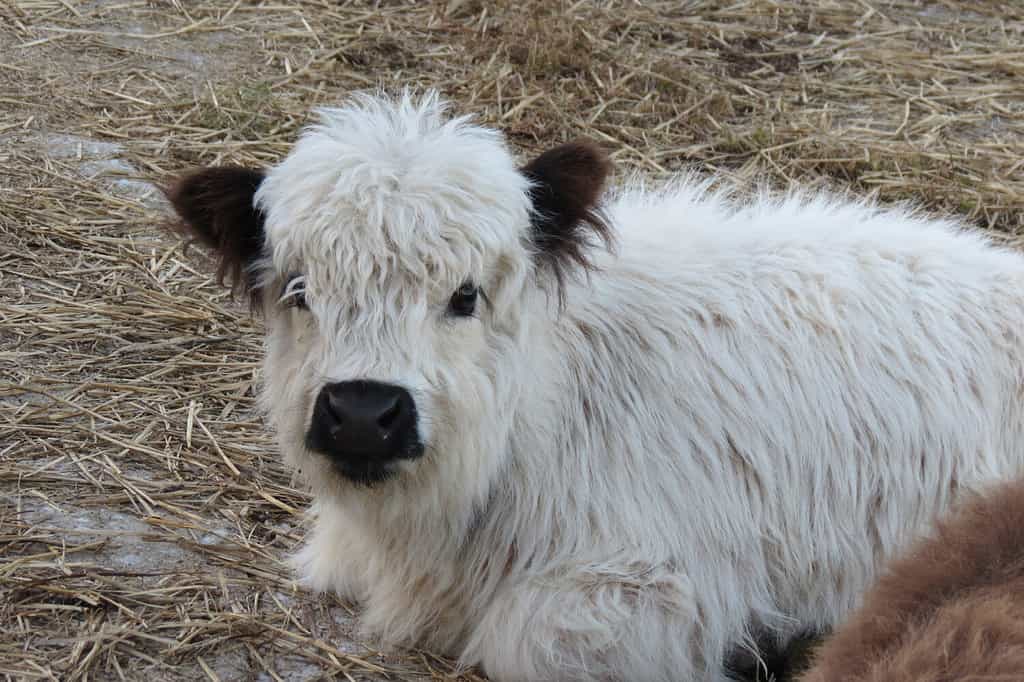
There are many different types of mini cows in all colors, but only certain breeds have horns.
©stevetucker/Shutterstock.com
Mini cows are becoming increasingly popular, in part for their adorable pint-size appearance. However, they also serve many practical purposes as well:
- Cost-effective and easy to care for
- Milk production
- Beef production
- Companionship
- Educational and Therapeutic Activities
Cost Effective and Easy to Care For
Mini cows are also gentle creatures with unique personalities, making them a joy to handle. Their compact frames and docile nature make them more manageable and safer for interacting with children. In addition, they are very easy to care for. While they still require dedication and care like their full-size counterparts, their smaller size means their needs are scaled down. Mini cows require significantly less pasture space, making them popular among homesteaders and hobby farmers. They are also cost-effective as they require less feed. In addition, their reduced size results in less waste production, saving you from daily excessive cleanup. They also cause less damage to the land or fences, which means you won’t need to spend nearly as much money on regular repairs.
Milk and Beef Production
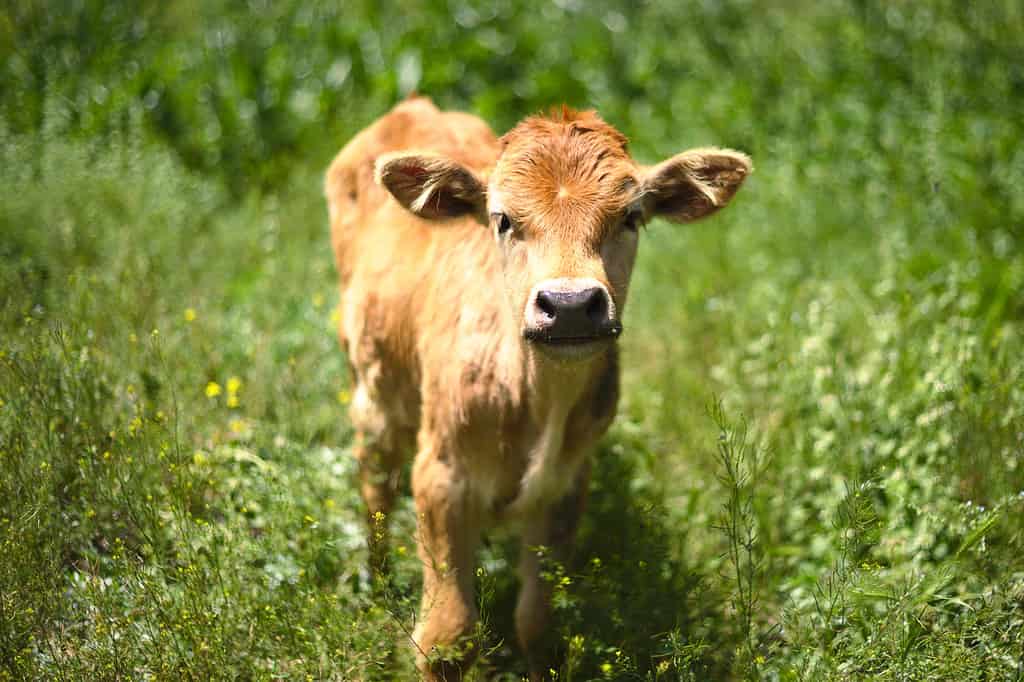
Even fully grown mini cows can sometimes look like young calves.
©DmitryLityagin/iStock via Getty Images
During a high-yield production period, an average standard-sized cow produces around 6 to 10 gallons of milk a day. Despite their small size, if you have a hobby farm or homestead, a mini cow can still provide plenty of milk for your family. These tiny bovines typically yield around 1 to 1.5 gallons a day, making them a more manageable alternative for obtaining fresh milk.
Some miniature cow breeds also produce high-quality beef. While their compact size yields much smaller portions compared to full-size cows, mini cows offer several advantages that make them ideal for sustainable farming. For example, mini cows require less feed and less space, making them cost-effective alternatives to large cows.
Companionship
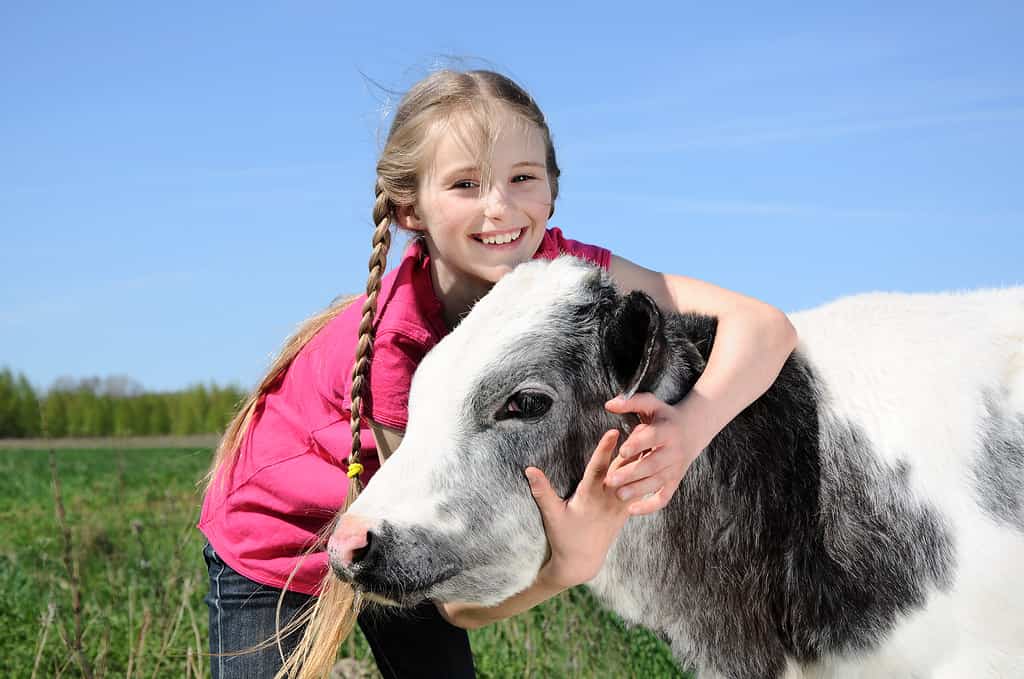
Mini cows make excellent companions and therapy animals.
©katkov/iStock via Getty Images
Believe it or not, many people keep cows as pets! Mini cows are gentle and affectionate creatures and can be charming companions for both children and adults. Their smaller size makes them easier to manage and safer to handle. However, despite their smaller bodies, mini cows can thrive with less space and resources. Additionally, they can help clear away brush and plants and even help you mow your lawn.
Mini cows are highly intelligent animals with a gentle and docile nature, making them exceptional companions. While they can be stubborn on occasion, their loyalty runs deep, and they can form strong bonds with their owners. In fact, these sociable creatures thoroughly enjoy interactive play and thrive on human interaction. Moreover, many mini cow breeds live for 15 to 20 years, ensuring long-lasting friendships and companionship.
Educational and Therapeutic Activities
Known for their gentle and docile nature, mini cows can be a great addition to educational and therapeutic activities, particularly for children. Mini cows are highly sought-after in petting zoos and are increasingly recognized for their therapeutic value in animal-assisted therapy programs.
Drawbacks and Challenges of Owning Mini Cows
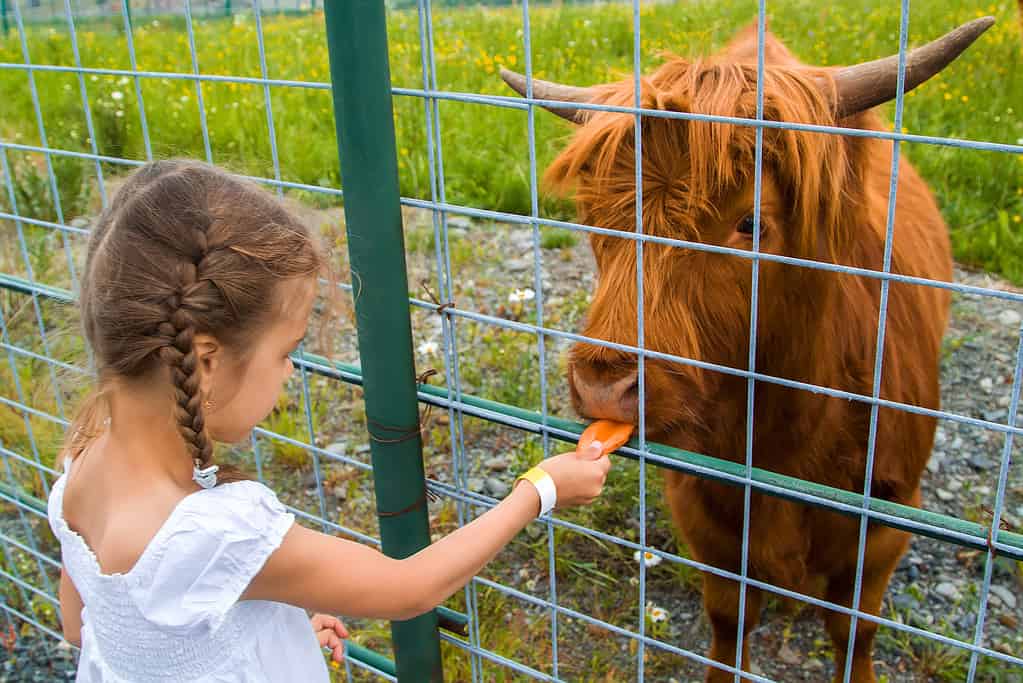
Mini cows still need early socialization with humans to ensure lasting relationships.
©sommersby/iStock via Getty Images
Although the impressive benefits of owning many cows are quite enticing, it’s important to also consider the challenges that they present as well:
- Upfront costs
- Social needs
- Less milk and beef production
Upfront Costs
The diminutive size and gentle demeanor of mini cows are captivating, but they also come at a cost. These endearing creatures are not only rare to find but also come with a higher price tag compared to standard-size cows. They may prove to be quite cost-effective in the long run, but the upfront cost and investment are substantial.
In addition, you’ll need to ensure that they have ample space, fencing, and housing, and ensure that they receive proper veterinary care. Moreover, it’s crucial to budget for their long-term care as miniature cows have an impressive lifespan of 15 to 20 years.
Less Milk and Beef Production
Mini cows are often utilized for both milk and beef production. However, it’s important to recognize that their smaller size naturally results in significantly less production compared to full-size cows. When it comes to economical production and quantity, it’s important to consider your budget and individual needs. Depending on your situation, a mini cow may not provide enough to adequately meet your needs.
Social Needs
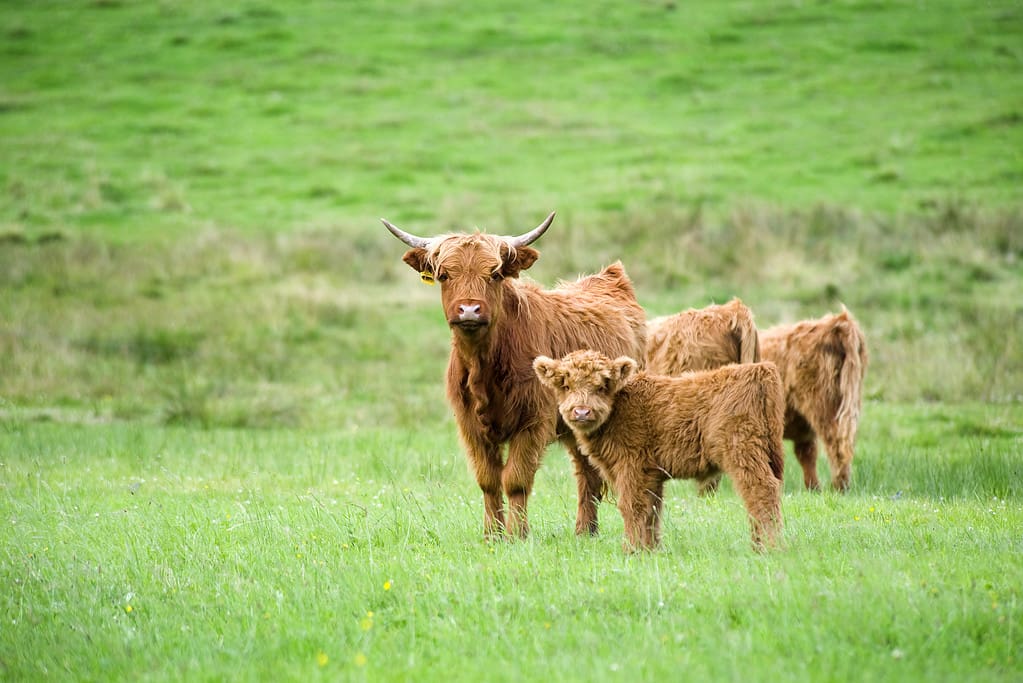
Cows are herd animals with a need for sociality and companionship.
©Guenter Guni/iStock via Getty Images
Mini cows are adored far and wide for their charm and gentle temperament. However, it’s crucial to remember that mini cows are also herd animals with a strong need for companionship. To ensure their happiness and well-being, it may be necessary to have more than one mini cow. Solitude and isolation can be extremely detrimental to their mental health and overall condition. If you have only one mini cow, it is essential that you spend plenty of quality time with them every single day. Making sure that they have other cows or companion animals can also add to their happiness and overall health as well.
Types of Mini Cows
If you are considering getting a mini cow, it is important to choose the right breed. With 26 different breeds to choose from, it may be tempting to base your decision solely on appearance. However, you’ll also want to consider your goals and lifestyle as well. Are you looking for a mini cow to provide milk or beef for your family? Or do you have plans to keep one for educational purposes, or even as a cherished pet? Be sure that you research and learn as much as you can to ensure that you make the right choice, as it will affect both you and the cows in your care.
There are several different types of mini cows, but here are some of the most common breeds you may come across.
Miniature Scottish Highland Cattle

Scottish highland cows are easy to recognize due to their large horns and long, shaggy hair.
©Parasoliastock/iStock via Getty Images
There are few things cuter than a miniature Scottish Highland cow with eyes barely peeking out from beneath their long, shaggy fur. Originating in the rugged terrain of the Scottish Highlands, this ancient breed evolved to survive and thrive amid cold and harsh environments.
Mini Scottish Highland cows have stocky bodies covered in lots of thick hair, so they do best in cooler climates. They are hardy and self-sufficient grazers, renowned for their resilience and gentleness. While Mini Highland cows predominantly exhibit a reddish-brown hue, their soft coats can also exhibit shades of brown, black, red, yellow, silver, or white.
Miniature Belted Galloway
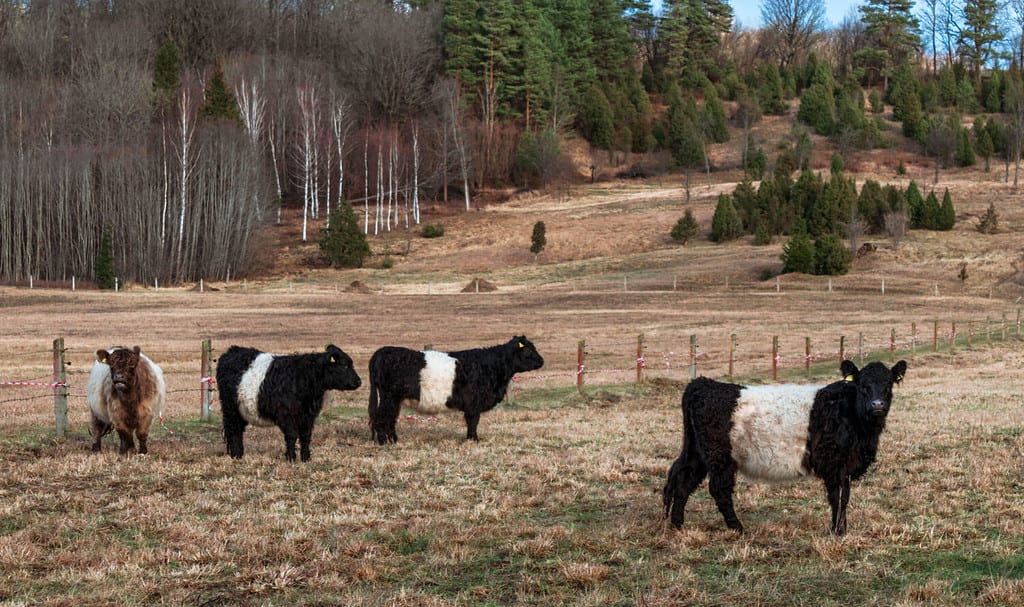
Belted Galloways are also called “belties”.
©Dace Kundrate/Shutterstock.com
Another small cow from Scotland, the hardy miniature belted Galloway is a great addition to small farms. These cute mini cows come in many different colors and have thick double coats. Their most distinctive feature, however, is the iconic white pattern that runs around the middle of their bodies like a large belt.
Miniature belted Galloways do not have horns, and they are not at all fussy about what they eat. Their water-resistant coats provide protection against the elements, and they have a remarkable ability to gain weight for beef production.
Mini Dexter
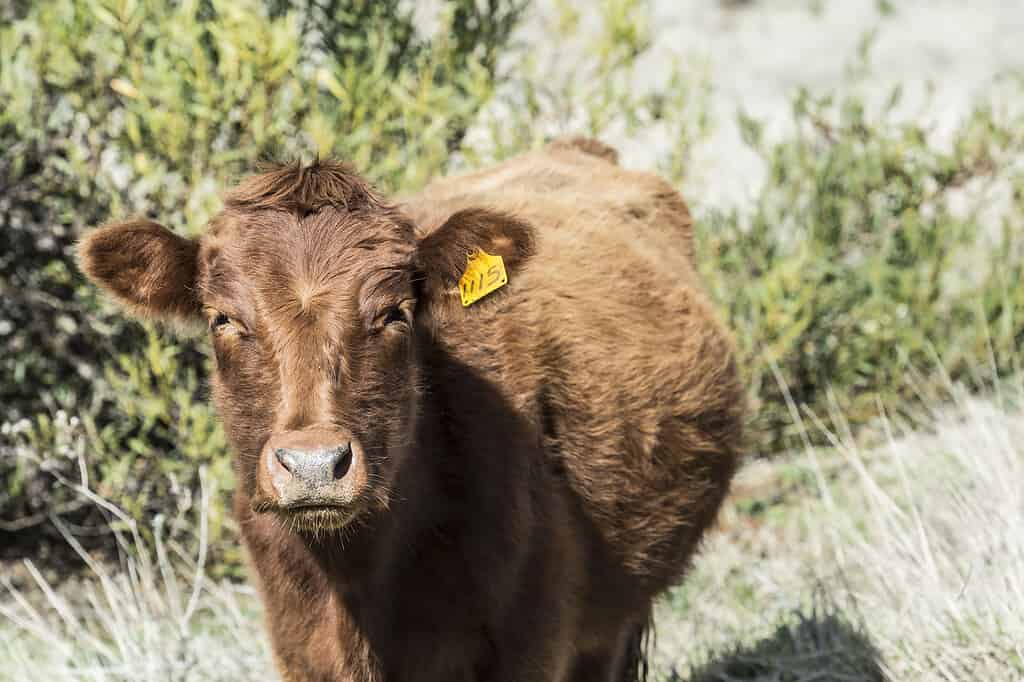
Dexter cows and mini Dexter cows are some of the most popular cattle in the world.
©Marion_Smith/iStock via Getty Images
These darling mini cows are some of the most popular in the United States, and for good reason! Not only are they incredibly cute, but they also serve as excellent sources of milk and beef. Mini Dexter cows are multi-purpose cows with very friendly personalities. They are quite versatile and weigh between 600 and 800 pounds when fully grown. In addition, some Dexter cows even serve as small-scale draft animals as they are quick to learn, obedient, and have a natural inclination for pulling.
Mini Hereford

Hereford cows are hardy, adaptable, and gain weight easily.
©Gea Veenstra/iStock via Getty Images
Mini Hereford cows grow quickly, maturing almost 20% faster than other breeds, and produce high-quality beef. They are also smart and docile, which makes them ideal pets and companionable farm animals. Mini Hereford cows are excellent foragers and are adaptable across many different types of climates.
Mini Jersey Cow
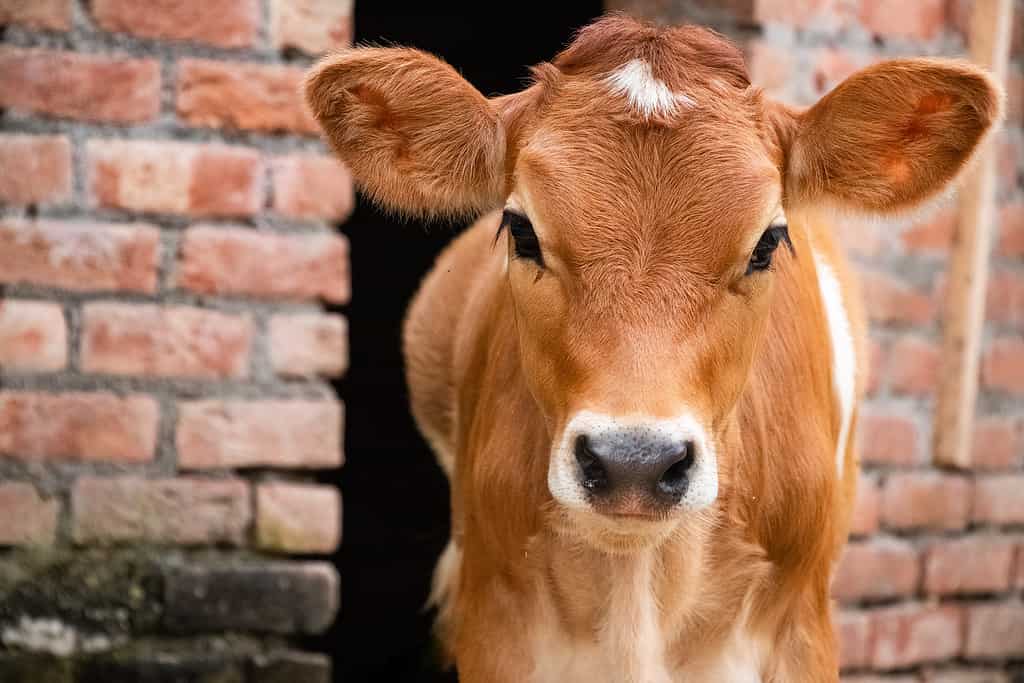
Some of the most captivating features of Jersey cows are their enchanting, doe-like eyes.
©Virender Singh/iStock via Getty Images
Full-size Jersey cows can reach 62 inches as adults, but mini Jerseys are only 36 to 42 inches. Although they are significantly smaller, mini jerseys still produce top-quality milk, just like their full-size counterparts. However, mini-Jersey cows are easier to manage and require less space and feed. Mini jersey cows have beautiful light to dark brown colors, and many have striking white patterns.
The photo featured at the top of this post is © DmitryLityagin/iStock via Getty Images
Thank you for reading! Have some feedback for us? Contact the AZ Animals editorial team.



